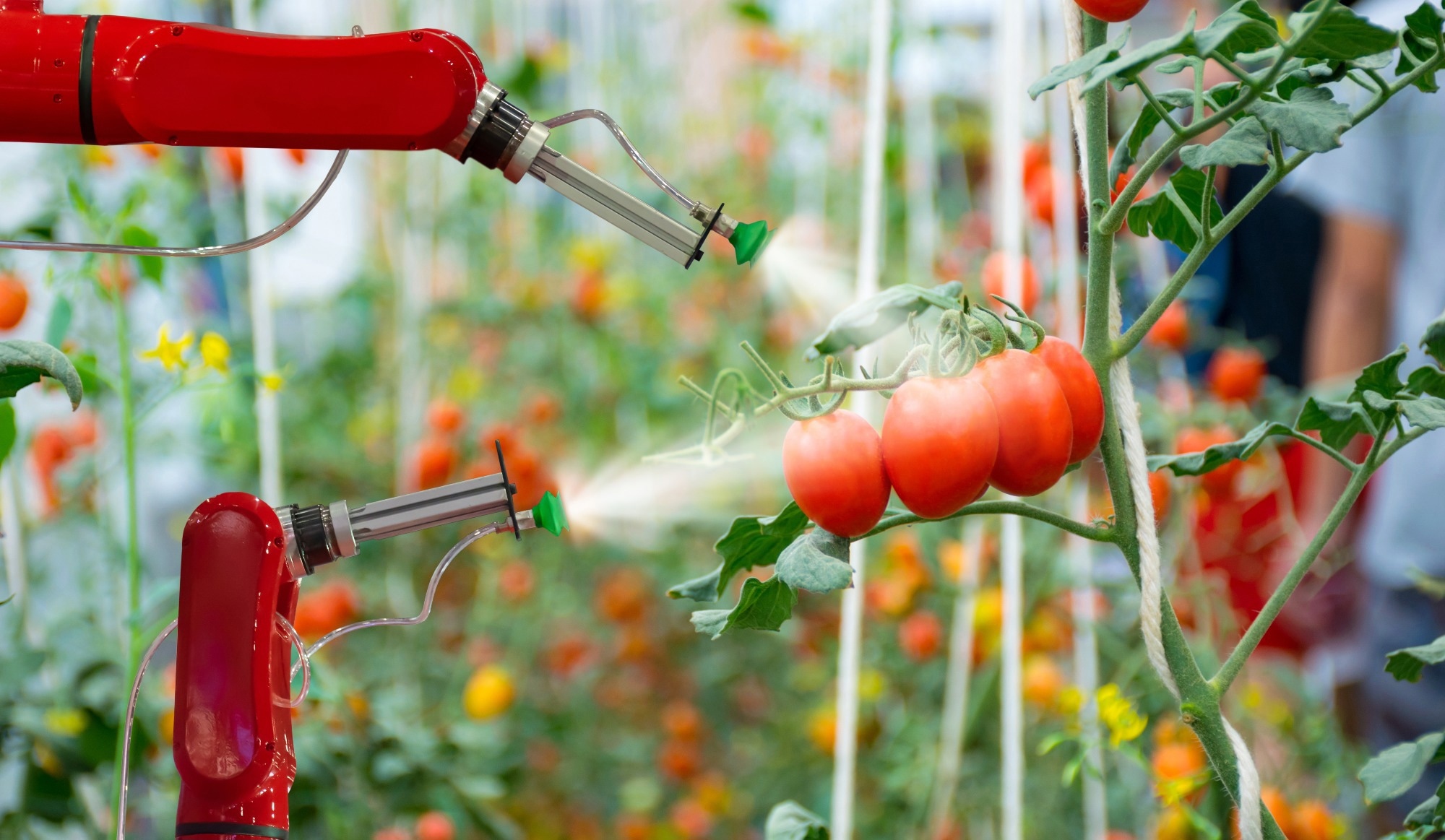In an article published in the journal Sustainability, researchers from Saudi Arabia and Pakistan discussed the potential of artificial intelligence (AI) to transform crop farming to enhance food security, nutrition, and environmental sustainability in smart cities. They proposed a robotic crop farm prototype using deep reinforcement learning (DRL) to improve watering, seeding, and crop maintenance in response to sensor data. The developed system was tested in a simulated crop farm setting and benchmarked against conventional farming methods.
 Study: AI-Driven Robotic Crop Farming for Sustainability. Image credit: kung_tom/Shutterstock
Study: AI-Driven Robotic Crop Farming for Sustainability. Image credit: kung_tom/Shutterstock
Background
Global warming is expected to make water sustainability scarce in the upcoming decades, posing an alarming situation for irrigation systems. Water isessential for crop production and to fulfill the needs of the ever-increasing population across the globe. The changing climate significantly affects agriculture production due to the extreme weather that prevails in many regions. Since urbanization is increasing, smart cities must use ways to grow food sustainably within built farm environments. Adapting precision agriculture, a technique that uses data and technology for targeted interventions shows promise in the context of urban farming.
As urban areas continue to expand, the adoption of precision farming has emerged as an innovative approach, marking a substantial departure from traditional agricultural methods towards more specialized, data-driven strategies. The primary objective of precision farming in urban settings is to enhance plot-level management of the health of the plant and production efficiency. This is achieved through the use of sensor technology, satellite imaging, data analytics, and global positioning systems (GPS). These tools contribute to the more effective monitoring and regulation of urban green spaces and crops, benefiting public health.
About the Research
In the present study, the authors aim to investigate how the DRL machine learning (ML) method can be incorporated into autonomous agricultural robots for adaptive seeding and water management, DRL is an ML technique that is a combination of deep learning (DL) and reinforcement learning. They designed and implemented an autonomous agricultural robot called Agrorobotix, which consists of a mechanical setup, sensor integration, and a DRL-based decision-making system.
The mechanical setup includes a chassis, four wheels, four motors, a mechanism for drilling holes in the ground, a seed dropper, a flattener, and a watering system. The sensor integration includes soil moisture sensors, weather sensors, and a GPS module. The DRL-based decision-making system uses the proximal policy optimization (PPO) algorithm, which updates the policy without making significant changes, to select the optimal actions based on the state space and the reward function. The robot uses its drilling machine, seed dropper, flattener, and sprinkler to perform seeding and watering tasks while collecting data from soil moisture sensors, weather sensors, and GPS.
The researchers tested the Agrorobotix system in a simulated crop farm environment using the Gazebo software tool that allows the creation and testing of robots in realistic scenarios. The crop farm is an area of one acre, located in Faisalabad, Pakistan, where the rainfall is moderate. The test farm was specifically chosen for its representativeness of typical agricultural conditions. The field experiments with Agrorobotix spanned over 30 days, enabling comprehensive data collection and algorithm refinement. The system was trained using historical data along with data collected from real-time simulations.
Research Findings
The performance of Agrorobotix was evaluated based on the usage of water and crop yield, then compared with conventional farming techniques to determine the effectiveness and sustainability of the suggested methodologies. The comparison showed the following:
- Crop yield increased by an average of 16.3% using Agrorobotix. This was measured as the total shoot length of crops produced per unit seed.
- Water usage decreased by an average of 21.7% with Agrorobotix. This was assessed as the total quantity of water used per unit area.
- Chemical usage decreased by an average of 33% with Agrorobotix. This was calculated as the total amount of fertilizer and pesticide used per unit area.
The outcome shows that DRL increases crop productivity while reducing water and chemical use in an autonomous agricultural robot. The learning curves of the PPO algorithm demonstrate how the robot can learn and improve its decision-making over time. The results also represent that the proposed technology can optimize important agricultural variables, such as the seed sowing depth, density, and irrigation schedule, resulting in higher yields and more environmentally friendly farming methods.
Applications
The study highlights the importance of Agrorobotix in transforming urban agriculture and integrating it into smart cities. Agrorobotix makes a significant contribution to the sustainability and efficiency of urban farming using AI and robotics technologies, which is essential for the formation of smart cities. By maximizing the usage of resources to minimize environmental impacts and improve food security in urban regions, this system is in line with the smart city's objective. Adopting such technologies can make food supplies resilient, reduce land use, and minimize agriculture’s environmental footprint.
Conclusions
The paper summarizes that integrating DRL into autonomous agricultural robots offers significant benefits for water management and adaptive seed sowing. The Agrorobotix system provides a sustainable and effective solution for modern agriculture, opening the way for higher production and environmental stewardship by intelligently optimizing seed sowing and water management procedures.
The authors acknowledge the limitations of their approach, such as terrain navigation difficulties and maintenance needs, and suggest directions for future work to enhance the practical applicability and operational efficiency of agricultural robotics.